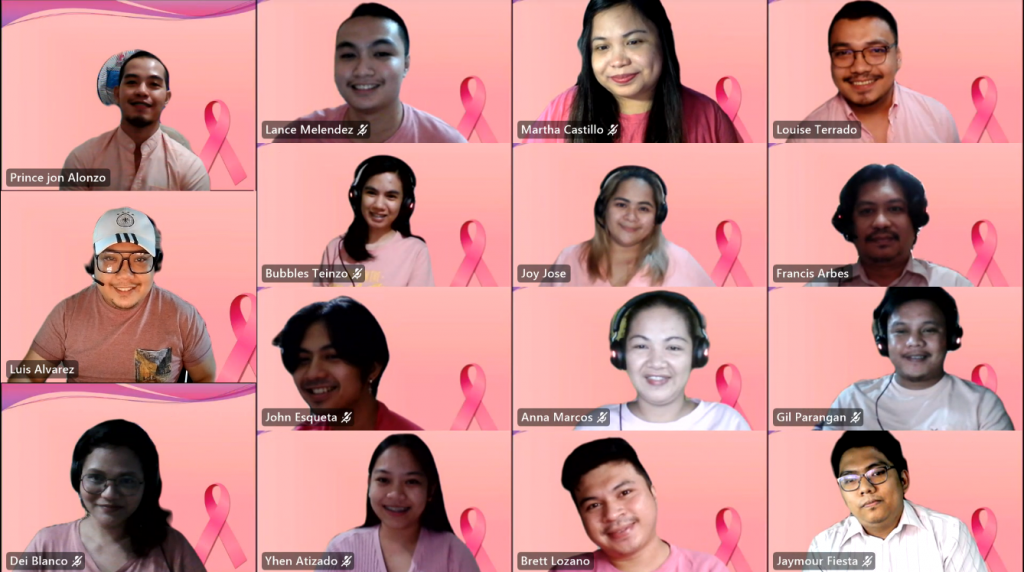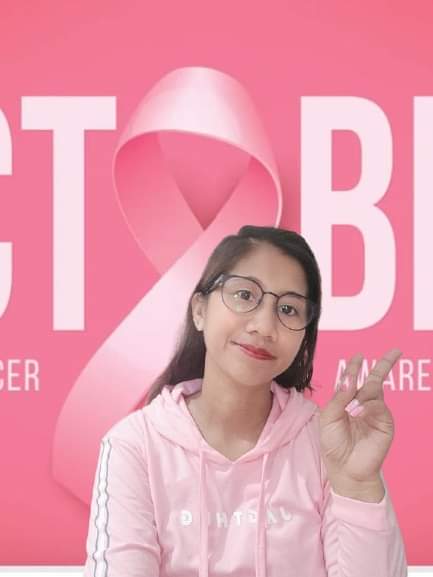Breast Cancer Awareness Month is an annual international health campaign that aims to raise awareness about breast cancer, and the challenges that remain with the disease. The month aims to break down barriers which prevent individuals from expressing how they feel, and reducing the disparities that exist across races, genders, and ethnicities in receiving diagnosis and treatment.
The month is a reminder of the painful truth that 1 in 8 women, and 1 in 1,000 men will be diagnosed with breast cancer in their lifetime.
According to the International Agency for Research on Cancer, Breast cancer is now the world’s mostly commonly diagnosed cancer (December, 2020).
Although through research, scientists have gained a better understanding of breast cancer and developed more effective treatments, prevention is better than cure.
Therefore, educating individuals, and how they can check themselves is so important!
So, lets stand together and check ourselves this breast cancer awareness month.
Facts about breast cancer:
- Women who get regularly screened for breast cancer have a 47% lower risk of dying from the disease compared to those who don’t.
- Breast cancer deaths have been declining since 1990 thanks to early detection, better screening, increased awareness, and new treatment options.
- Every minute, somewhere in the world, a woman dies from breast cancer. That’s more than 1,400 women every day.
- A man’s lifetime risk of breast cancer is about 1 in 1,000.
- PREVENTION IS BETTER THAN CURE.
What breast cancer can look or feel like?
- Thick area
- Dimple
- Nipple crust
- Red or hot
- New fluid
- Skin sores
- Bump
- Growing vein
- Sunken nipple
- New shape/ size
- “Orange peel” skin
- Hard lump
How to check yourself:
First and foremost, it is recommended that you conduct a self-examination once a month! So, let’s make use of technology, and add some reminder notifications!
1) In the Shower
With the pads/flats of your 3 middle fingers, check the entire breast and armpit area pressing down with light, medium, and firm pressure. Check both breasts each month feeling for any lump, thickening, hardened knot, or any other breast changes.
2) In Front of a Mirror
Visually inspect your breasts with your arms at your sides. Next, raise your arms high overhead.
Look for any changes in the contour, any swelling, or dimpling of the skin, or changes in the nipples. Next, rest your palms on your hips and press firmly to flex your chest muscles. Left and right breasts will not exactly match—few women’s breasts do, so look for any dimpling, puckering, or changes, particularly on one side.
3) Lying Down
When lying down, the breast tissue spreads out evenly along the chest wall. Place a pillow under your right shoulder and your right arm behind your head. Using your left hand, move the pads of your fingers around your right breast gently covering the entire breast area and armpit.
Use light, medium, and firm pressure. Squeeze the nipple; check for discharge and lumps.
Breast Cancer Awareness at Jarvis:
Our Jarvis employees were sent an information pack addressing what Breast Cancer is, what the risk factors are, the symptoms, how to check yourself for the disease, and most importantly if you or your family are affected by this disease how Jarvis can help you.


References:









